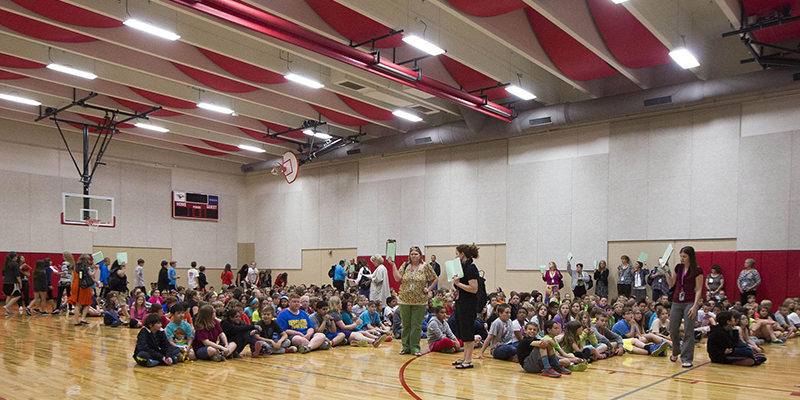
 |
| Shelter from the storm: Joplin tornado spurs explosion of school safe room projects. |
 |
| Students at Inman Intermediate School in Nixa, Mo., sit in their school's FEMA tornado shelter during a tornado drill. Photo: David Welker |
| Many Missouri school districts have spent the past three and a half years working to add safe rooms to their schools. Officials say it's largely a result of the destruction of the May 2011 tornado which killed 161 people in Joplin and Duquesne and destroyed thousands of homes and businesses, dozens of churches and nearly a dozen school buildings, including Joplin High School. Even districts that were already planning to build safe rooms at the time the tornado hit said the storm served as a catalyst for putting their plans into motion to try to prevent another devastating catastrophe. "If we could do something about it, then let's do it," Superintendent Mike Mabe said of his school district's proposal to try to maximize safety in case of severe weather. "It's just the right thing to do." When current and proposed construction projects are completed, more than 40,000 students, staff and community members across Southwest Missouri and Southeast Kansas will have access to safe rooms during severe weather, according to a study conducted by the Joplin Globe. More than $100 million will have been poured into the projects, with a large portion being paid with FEMA grant funds. The Salisbury, Mo., school district recently unveiled its new gymnasium that doubles as a tornado safe room. FEMA grants covered 75 percent of the costs for the part of the gym that is considered a safe room. The new gym has a capacity of 1,250, which covers the population of the entire town. "The fact that it's a safe room is a nice bonus for the community and our kids," said Superintendent Todd Willhite. "Hopefully we never need it for that. But, it's nice to know and comforting to know that we've got that for our kids and the whole community." The storm shelter building boom has not been limited to school systems, either. Last week, Mercy Hospital in Joplin held an open house for its new 900,000 square foot facility that has storm-hardened features. "Having windows that can withstand a storm is a huge deal," said Gary Pulsipher, president of Mercy Hospital Joplin. "Winds like the ones we experienced in the May 2011 tornado caused major damage and once inside the building, they tore things apart and sent debris flying. There was no question we needed to prevent that going forward." That's why the structure incorporates a window and frame system that can protect its most vulnerable patients from winds up to 250 miles per hour. Mercy also added a concrete roof, fortified "safe zones" on every floor and half-buried generators away from the main building. "Mercy applied unheard of standards to areas of the hospital where people can't quickly escape, protecting even our frailest patients who depend on life-sustaining equipment," Pulsipher said. "It's part of understanding the unique role of a hospital — what it is, what it does and who it serves." |
Share this story:



|